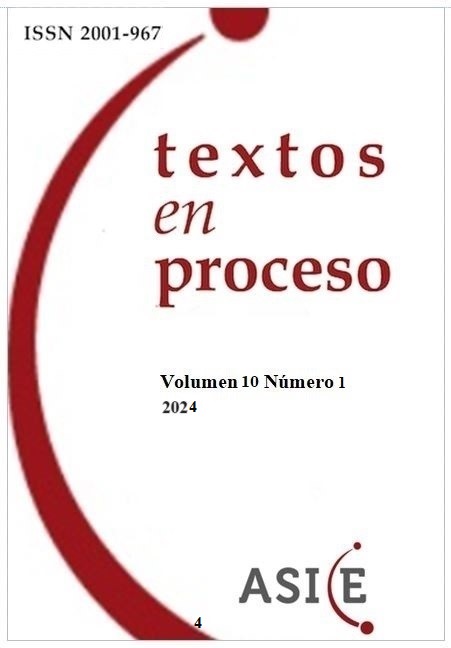The intersectional construction of the category Women in Colombian journalistic discourse
Abstract
This study analyzes the representation of women in a Colombian journalistic corpus on Afro-descendant identity. Based on previous research on the representation of Blackness in the corpus, the study pursues three main objectives: to describe the linguistic features of discourses about women, to analyze the intersectional perspective present in the corpus and to critically assess its function in media discourse. To achieve this, the study employs a theoretical-methodological approach based on critical discourse analysis and corpus linguistics. The analysis of the semantic prosody of mujer and its transitivity structures reveals two main discursive patterns. The first portrays women as victims of multiple forms of violence as well as forced displacement. This discourse focuses on Afro-descendant and Indigenous women, who face intersectional oppressions related to gender, social status, and educational level. The second pattern, closely linked to the first, presents women in their role of resistance and struggle against these forms of violence. Women, especially young ones, are depicted as entrepreneurs, leaders, and human rights defenders. The study also examines the application of the concept of intersectionality in Colombian journalistic discourse, where mujer and negritud are central categories. Various intersections are identified, reflecting both the need for denunciation and a discursive tradition in academia and Black feminism. This research identifies the linguistic features that shape these discourses and highlights the importance of making both narratives of oppression and resistance visible. Additionally, it warns of the risk that these representations may become rigid categories, limiting the critical potential of intersectional discourses in the media.
Downloads
References
Baker, P. (2006). Using Corpora in Discourse Analysis. Londres: Contin.
https://doi.org/10.5040/9781350933996
Baker, P., A. Hardie y T. McEnery (2006). A glossary of corpus linguistics. Edinburgh: Edinburgh University Press. https://doi.org/10.1515/9780748626908
Bourdieu, P. (1985). The Social Space and the Genesis of Groups. Theory and Society 14(6), 723-744.
Combahee River Collective (1977). “A black feminist statement”, Reimpreso en Ch. Moraga y G. Anzaldúa (1981), This Bridge Called My Back: Writtings by Radical Women of Color, Women of Color Press, Nueva York, pp. 210-218.
Crenshaw, K. (1989). Demarginalizing the Intersection of Race and Sex: A Black Feminist Critique of Antidiscrimination Doctrine, Feminist Theory and Antiracist Politics. University of Chicago Legal Forum, 139-167.
Crenshaw, K. (1991). Mapping the Margins: Intersectionality. Identity Politics, and Violence against Women of Color. Stanford Law Review, 43(6). https://doi.org/10.2307/1229039
DANE (Departamento Administrativo Nacional de Estadística) (2025). Demografía rural en Colombia. Bogotá: DANE.
Fairclough, N. (1995a [2013]). Critical discourse analysis. The critical study of language. Londres: Routledge.
Giugliano, M., Bürki, Y. (aceptado). Representaciones de la negritud en la prensa colombiana: Un estudio interseccional basado en corpus. Círculo de Lingüística Aplicada a la Comunicación.
Goffman, E. (1959). The presentation of self in everyday life. Garden City, New York: Doubleday.
Gómez, C., Murad, R., y Calderón, M. C. (2013). Historias de violencia, roles, prácticas y discursos legitimadores. Violencia contra las mujeres en Colombia 2000-2010. Recuperado a partir de
Gros, Ch. (2012). Políticas de la etnicidad: identidad, Estado y modernidad. Bogotá: Instituto Colombiano de Antropología e Historia.
Halliday, M.A.K. y Matthiessen, Ch. (2004). An introduction to functional grammar. Londres: Oxford University Press.
Haraway, D. (1988). Situated Knowledges: The Science Question in Feminism and the Privilege of Partial Perspective. Feminist Studies 14(3). 575–599.
https://doi.org/10.2307/3178066
Hill Collins, P. (1990). Black Feminist Thought: Knowledge, Consciousness, and the Politics of Empowerment. Boston: Unwin Hyman.
Hill Collins, P. y Bilge, S. (2019). Interseccionalidad. San Sebastián de los Reyes: Ediciones Morata.
Islentyeva, A. (2020). Corpus-Based Analysis of Ideological Bias: Migration in the British Press. Londres y Nueva York: Routledge. https://doi.org/10.4324/9780429263064
Kilgarriff, A. (2009). Simple maths for keywords. In Mahlberg, M., González-Díaz, V. y Smith, C. (eds.), Proceedings of Corpus Linguistics Conference CL2009. Liverpool: University of Liverpool.
Louw, B. (1993). Irony in the Text or Insincerity in the Writer? The Diagnostic Potential of Semantic Prosodies. En Baker, M., Gill, F. y E. Tognini-Bonelli (eds.) Text and Technology: In Honour of John Sinclair. Philadelphia/Amsterdam: John Benjamins, pp. 157–176.
https://doi.org/10.1075/z.64.11lou
Newman, N., Fletcher, R., Robertson, C. T., Eddy, K. y Kleis Nielsen, R. (2002). Digital News Reports 2022. Recuperado de https://reutersinstitute.politics.ox.ac.uk/sites/default/files/2022-06/Digital_News-Report_2022.pdf
Puar, J. K. (2007), Terrorist Assemblages: homonationalism in queer times. Durham: Duke University Press. https://doi.org/10.2307/j.ctv1131fg5
Stewart, D. (2010). Semantic prosody: A critical evaluation. Londres, England: Routledge. https://doi.org/10.4324/9780203870075
Suárez Pinzón, I. (2015). Violencia de género y violencia sexual del conflicto armado colombiano. Cambios y permanencias 6: 173-203
Recuperado de https://revistas.uis.edu.co/index.php/revistacyp/article/view/7097
Tibaná-Ríos, D. C., Arciniegas-Ramírez, D. A. y Delgado-Hernández, J. I. (2020). Tipos y manifestaciones de la violencia de género: una visibilización a partir de relatos de mujeres víctimas en Soacha, Colombia. Prospectiva, (30): 117-144.
https://doi.org/10.25100/prts.v0i30.8803
Tognini-Bonelli, E. (2001). Corpus Linguistics at Work. Amsterdam: John Benjamins.
Wade, P. (1993). Blackness and race mixture: the dynamics of racial identity in Colombia. Baltimore: John Hopkins University.
Van Leeuwen, T. (2008). Discourse and practice. New tools for critical discourse analysis. Oxford: Oxford University Press.
Wade, P., Urrea Giraldo, F., Viveros Vigoya, M. (2008). Identidades racializadas y sexualidades en América Latina. A manera de introducción. En Wade, P., Urrea Giraldo, F., Viveros Vigoya, M. (eds.), Raza, etnicidad y sexualidades. Ciudadanía y multiculturalismo en América Latina. Bogotá: Universidad Nacional de Colombia.
Wade, P. (2009). Defining Blackness in Colombia. Journal de la société des américanistes, 95(1): 165-184. https://doi.org/10.4000/jsa.10783
Wodak, R. (2008). Introduction: Discourse, text and context. En Wodak, R. y Krzyżanowski, M. (eds.), Qualitative discourse analysis in the social sciences (pp. 1–43). Houndmills: Palgrave Macmillan. https://doi.org/10.1007/978-1-137-04798-4_1
Yuval-Davis, N. (2006), Intersectionality and Feminist Politics, European Journal of Women’s Studies, 13 (3): 193-209. https://doi.org/10.1177/1350506806065752
Copyright (c) 2024 Marcello Giugliano

This work is licensed under a Creative Commons Attribution 4.0 International License.
Texts in Process (TEP) is a non-commercial open-access scholarly journal governed by a Creative Commons Recognition 4.0 International license. It follows a full and unrestricted open access, without charges or fees for shipping, reviewing, processing and publishing articles. Users can read, download without registering, distribute, print or link the complete texts of numbers and articles, without the permission of the editors or authors. There is also no charge to publish (APCs), being applicable to the entire editorial process. The authors retain their intellectual rights at all times.
ASICE-EDICE Programme has always believed that non-commercial, open, unlimited and unrestricted access to specialized academic publications is a vehicle for academic freedom and scientific rigor. It adheres and shares the Declaration of Mexico and DORA to guarantee the protection of academic and scientific production in Open Access.

















